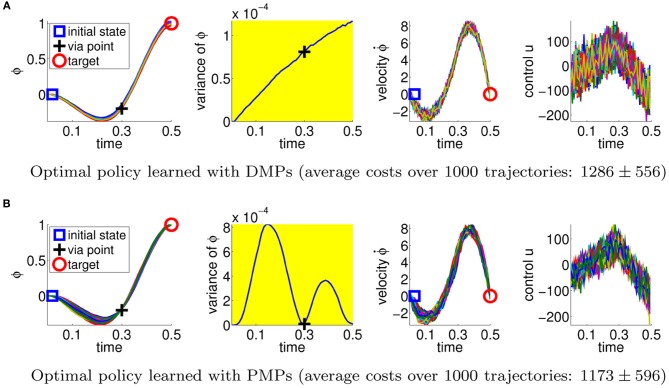Figure 3.
This figure illustrates the best available policies for the DMPs and the PMPs for the via-point task. From left-to-right shown are the point mass trajectories, the variance of these trajectories, the velocity of the point mass, and the applied accelerations. The agent has to pass the via-point at tv = 0.3 s and deal with the stochasticity of the system (Gaussian control noise with a variance of 202). The plots show 100 trajectories reproduced with the optimal parameters for the DMPs (A) and 100 trajectories with the (hand-crafted) optimal parameters for PMPs (B). The PMP approach is able to reduce the variance of the movement if it is relevant for the task, while the DMPs can only suppress the noise in the system throughout the trajectory in order to get an acceptable score. This advantage is also reflected by the average costs over 1000 trajectories. The DMP solution achieved cost values of 1286±556 whereas the PMP result was 1173±596.

